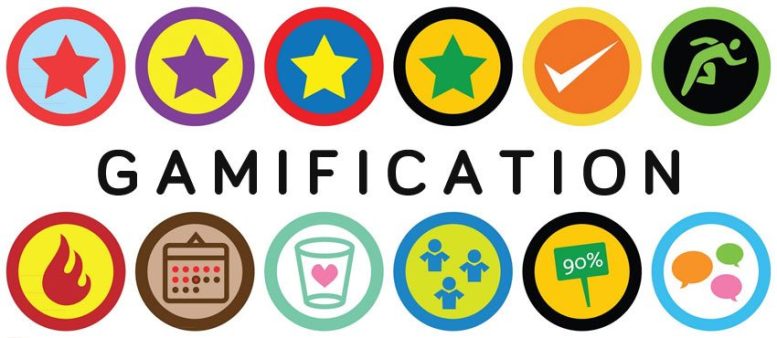Engagement is the purpose of games and gamification,so sometimes a bit of fun is exactly what you need to get your serious business really moving

Bjorn-Rune Hannsen, Gamification Manager at Intelecom, explains why you shouldn’t believe everything you hear about gamification in contact centres and takes a look at the myths surrounding the subject.
‘Gamification’ is one of those buzzwords that gets thrown around by people who know what it means and those who do not. In the contact centre industry, where employee engagement is known to be problematic, it’s something many managers know they should be doing, without really knowing why, how, where or when, or indeed, what it actually is. It’s time to set the record straight on what gamification is, and what it is not.
Myth One: Gamification is just an empty buzzword
Depending on who is using the term, and how it is used, this may very well be true. There are a lot of people talking about gamification without much understanding of the concept. But don’t let that dissuade you; gamification is so much more than a buzzword. Defined as the application of game dynamics and mechanics to real-world tasks and processes, it is less of a single, monolithic thing and more of a way of thinking.
As an example, consider the contact centre company CaLLogix[i]. It implemented gamification strategies as part of a wider wellness program, through which they reduced attrition by 50% and absenteeism by 80%. The lesson to take from this is that gamification is successful when used properly, when it’s not thought of as a single thing, but as part of a whole approach to implementing strategies across a business.
In contact centres people work with others in, and outside, your company. Those same people have needs and wants that must be met, for them to remain happy and engaged. Games are designed to meet those needs and wants. We should learn from them.
Myth Two: Gamification has no place in serious business
This myth is understandable; games are usually marketed as entertainment products and enjoyed outside of a work environment. However, you should be careful not to judge this book by its cover.
A core problem in contact centres is employee engagement and motivation. In 2014, Gallup stated that 51% of workers across all industries were “not engaged”, and as many as 17.5% were “actively disengaged”. We all know that the state of employee engagement in the contact centre industry is even worse than this wider average. According to a Skills CFA report[ii] our industry suffers from an average annual attrition rate of 24%, which in some cases can be as high as 43%.
This is costing the industry money. Without engaged employees performance can suffer. Engagement is the purpose of games and gamification,so sometimes a bit of fun is exactly what you need to get your serious business really moving.
Myth Three: Game based learning and gamification are just fads
It is often the case with buzzwords that they fade away as quickly as they arrive. However, if this were the case with gamification, then it would be one of the longest living fads in today’s society.
The use of games and game mechanics to make the ordinary and dull less so, is quite old. Scouts have badges, the military has medals and ranks. You did a good job in sales? Here, have a bonus. Employee of the month? These are all examples of a badge mechanics, which is a gamification concept. And that leaderboard? Everyone knows the concept, it’s been commonplace in contact centres, especially outbound-focused contact centres, for as long as they have existed.
Myth Four: Only young people play games
The idea that games are solely the domain of young people is a common one. And it follows from this idea that gamification, therefore, will only be motivating to young people.
This is, of course, not true.
Let’s start by putting to rest the young-gamers myth: According to the Entertainment Software Association, the average game player age is 35 years[iii] , therefore hardly a teenager in their bedroom. In fact, chances are a majority of your contact centre agents play games in their free time. The question is, how is this relevant to the industry?
Fundamentally, games are systems that engage people in learning experiences. Challenge is a necessity for engagement in a game, and challenge requires learning. This is what makes games useful in our industry. The main competitive advantage of localised contact centres is quality and competence, represented by our agents’ skill and knowledge, which makes training a key issue.
The problem is that training and on-boarding is traditionally one of the most expensive practices in contact centres, often requiring the agent to be taken ‘off the line’, a doubling up of staff or providing a lesser service to customers, even at times going so far as to suspend service during training. In a business where staff is the greatest cost, and customer service is king, none of these are suitable options and this is where gamification shines. Gamified training solutions can be decentralised and automated with relatively little effort, to combine employee engagement with essential training.
Myth Five: There’s no evidence that gamification works
The CaLLogix story illustrates how well gamification works in terms of reducing attrition and absenteeism in contact centres. Another indication of its effectiveness is in Norway, where an extension to the national airport of Gardermoen is being built, outside Oslo. Games are being used to familiarise staff with the new facilities and anecdotal evidence points to employees engaging in work related training while at home, in order to score more points.
Is there any clearer evidence that gamification definitely works?
 Additional Information
Additional Information
For additional information on Intelecom visit their Website or view their Company Profile


